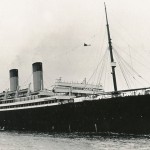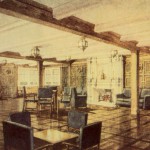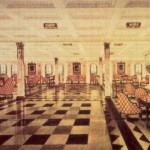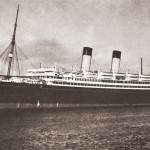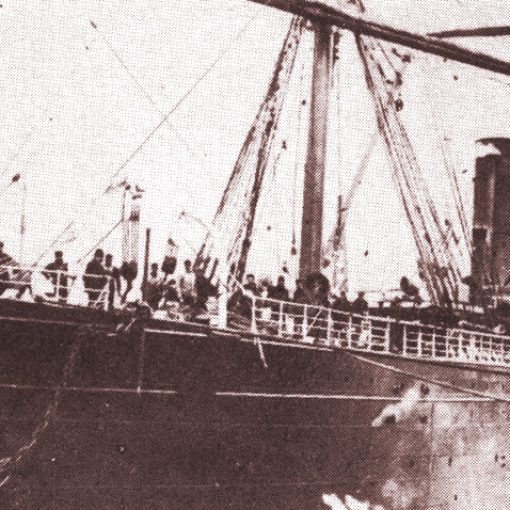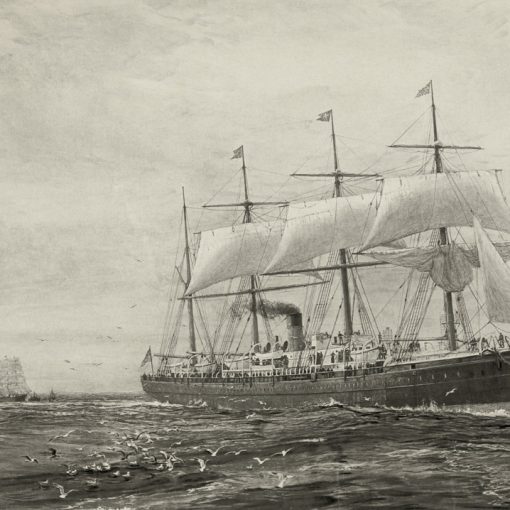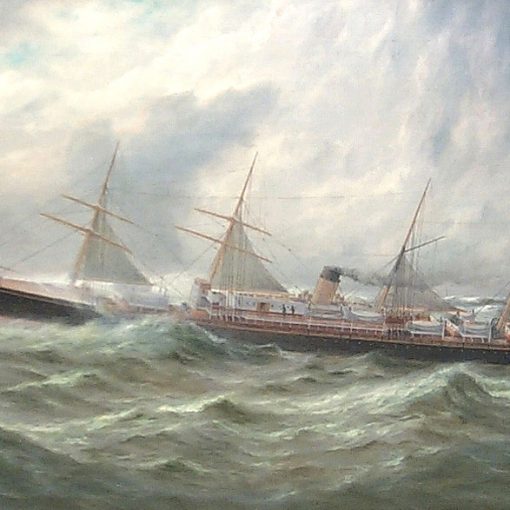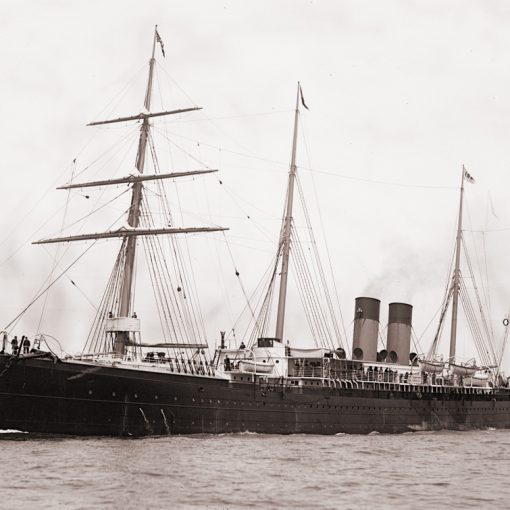1927 – 1940
The mid-1920s were to become years of great change for the White Star Line. The company had since 1902 been a part of the International Mercantile Marine, a consortium created by the American financier J. P. Morgan to achieve monopoly on the transatlantic route. But this goal was never reached, much because of the First World War that had seen the losses of many IMM-owned ships.
Thus, the White Star Line was sold in November 1926 to the Royal Mail Steam Packet Co., lead by Lord Kylsant, who had also been in control of Harland & Wolff Shipyards since the death of Lord Pirrie in 1924. The White Star Line, or the Oceanic Steam Navigation Company, was again British-owned.
Lord Kylsant’s plans for his empire were much alike those of J. P. Morgan’s 25 years earlier. But many of the ships in the White Star fleet were getting old and needed replacements. Unfortunately, funds were running low, and before the 1930s, many ships would be retired without being replaced, for example Persic, Medic and Athenic. But a bit of fresh tonnage was unarguably needed, so a few new vessels were commissioned at Harland & Wolff. But the price had to be cheap.
These new ships were intermediate ones, but one of them was slightly larger than the others, at some 18,700 tons. She was named the Laurentic. Actually, she was the second ship in the White Star fleet to bear that name; the first Laurentic had entered service in 1909. That ship had played a significant role when the company was to decide what type of engines their new trio Olympic, Titanic and Britannic would be fitted with – either traditional quadruple reciprocating engines with two propellers or triple-expansion engines turning two propellers in combination with a low-pressure turbine turning a centre-screw. The Laurentic was fitted with the combination type, and her sister – Megantic – was equipped with quadruple engines. The Laurentic proved to be both faster and more economical than the Megantic, so the choice of engines for the new trio was ultimately a fairly easy one.
But where the first Laurentic had been a very modern ship, the second was to become a drawback in ship design, most because she had to be cheap in construction. It can seem almost as poetic irony that the second Laurentic was one of the last ships fitted with triple-expansion engines in combination with a turbine, where the original Laurentic had been one of the first. Also, during a time when new ships were equipped with oil-fired machinery and older ships were converted into such, the new Laurentic was built with coal-fired boilers.
On June 16th 1927, the Laurentic was launched at Harland & Wolff, Belfast. Five months later, on November 1st, she went through her satisfactory sea trials. She was then handed over to her owners. It is notable that the Laurentic was the only vessel with a fixed price contract ordered by the White Star Line at Harland & Wolff. The two companies had always had a special relationship, with bills calculated at a cost-plus basis. However, as money had to be saved, the Laurentic’s price was agreed on in advance.
The Laurentic was intended for the Canadian run, but her masts were too high to go under the bridge at Montreal, and so they had to be cut down after delivery. But before entering her intended route, the Laurentic served between Liverpool and New York, with her maiden voyage on November 12th 1927. It was not until April 27th 1928 that she made her first voyage on the Liverpool-Quebec-Montreal run.
The Laurentic continued serving White Star with no major mishaps, except a collision with the Lurigethan in the Strait of Belle Isle. But the company suffered great financial difficulties, and in 1934 the former rivals White Star and Cunard merged into Cunard White Star. The Laurentic remained on her Canada run.
In 1935, the Laurentic became a part-time cruise ship, making £1-per-day voyages. On one such voyage, while in the Irish Sea, she encountered heavy fog. During the night she collided with the Napier Star, whereby six crew members were killed. Laurentic was returned to Liverpool, where she was repaired. However, she was then to be laid up a few times over a period of four years.
In 1939 the Second World War broke out. The Laurentic was brought to Plymouth in September. There she was converted into an armed merchant cruiser. Her after mast and derrick posts were removed and she was fitted with guns and anti-aircraft equipment. In November that same year, the Laurentic ran across the Hamburg-Amerika Line’s Antiochia off Iceland. The German ship scuttled herself, but at least served as target practice while sinking.
1940 got off at a bad start for the Laurentic when she ran aground in fog. She was brought back to her builders and repaired in six weeks. Then she returned to her war duties. But on November 3rd 1940 at 21.40, the allied vessel Casanare was torpedoed by the German submarine U-99. The distress calls were intercepted by the Laurentic, who immediately went to the rescue. The U-99 was still looming in the surrounding waters and managed to hit the Laurentic at 22.50 off the Bloody Foreland. Another two torpedoes followed the original one, and the ship sunk. Of the 416 people on board, 367 managed to escape. 49 were lost.
Specifications
- 600 feet (183.3 m) long
- 75 feet (22.9 m) wide
- 18,724 gross tons
- Steam triple-expansion engines turning two wing-propellers and a low-pressure turbine turning the centre propeller
- 16 knot service speed
- Passenger capacity of 1,500 people

